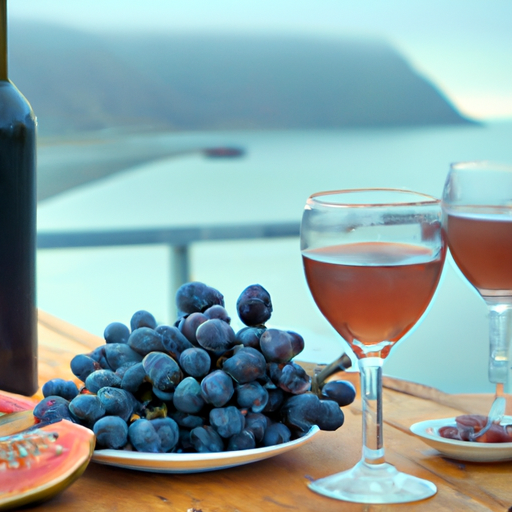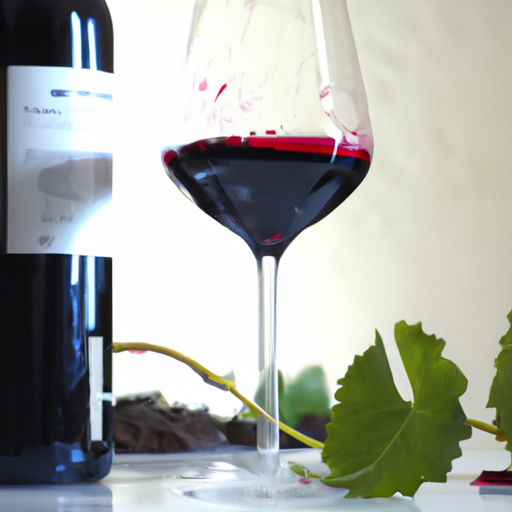The History and Heritage of Chilean Coastal Wines
Chilean coastal wines have gained international recognition for their exceptional quality and unique characteristics. The history and heritage of these wines can be traced back to the arrival of Spanish conquistadors in the 16th century. These early settlers brought with them vine cuttings from Europe, laying the foundation for Chile’s thriving wine industry.
The coastal region of Chile, with its cool climate and diverse terroir, provides the perfect conditions for growing a wide variety of grape varietals. The Pacific Ocean’s influence on the climate creates a cool and foggy environment, which is ideal for producing wines with vibrant acidity and intense flavors.
One of the most significant milestones in the history of Chilean coastal wines was the introduction of French grape varieties in the 19th century. Influenced by the success of Bordeaux wines, Chilean winemakers began experimenting with Cabernet Sauvignon, Merlot, and Carmenere. These varietals thrived in the coastal region, producing wines that were rich, complex, and full-bodied.
Over the years, Chilean winemakers have continued to innovate and refine their winemaking techniques, resulting in wines that are now recognized as some of the best in the world. The coastal region’s unique combination of climate, soil, and topography allows winemakers to produce wines that are both elegant and expressive.
The heritage of Chilean coastal wines is deeply rooted in the country’s cultural identity. Wine has been an integral part of Chilean culture for centuries, with vineyards and wineries becoming important landmarks in the country’s landscape. Many of these wineries have been passed down through generations, preserving traditional winemaking practices and techniques.
Chilean coastal wines also reflect the country’s commitment to sustainability and environmental stewardship. Many wineries in the region have adopted organic and biodynamic farming practices, minimizing the use of chemicals and promoting biodiversity. This dedication to sustainability not only ensures the long-term health of the vineyards but also contributes to the unique character of Chilean coastal wines.
In recent years, Chilean coastal wines have gained a loyal following among wine enthusiasts around the world. The wines’ exceptional quality, combined with their affordability, has made them a popular choice for both casual drinkers and connoisseurs. The coastal region’s proximity to the ocean and the cooling effect of the Humboldt Current result in wines that are fresh, vibrant, and well-balanced.
Chilean coastal wines are known for their versatility and ability to pair well with a wide range of cuisines. Whether it’s a light and crisp Sauvignon Blanc or a bold and robust Cabernet Sauvignon, these wines can enhance the flavors of any dish. From seafood to grilled meats, Chilean coastal wines are the perfect accompaniment to a delicious meal.
In conclusion, the history and heritage of Chilean coastal wines are deeply intertwined with the country’s cultural identity. The unique combination of climate, soil, and winemaking techniques has resulted in wines that are both exceptional in quality and reflective of Chile’s rich winemaking tradition. Whether you’re a wine enthusiast or simply looking to explore new flavors, Chilean coastal wines are sure to delight your palate.
Exploring the Unique Terroir of Chilean Coastal Vineyards

Chilean coastal wines are gaining recognition and popularity in the wine world, thanks to their unique terroir and exceptional quality. The coastal vineyards of Chile offer a perfect combination of climate, soil, and geography, resulting in wines that are distinct and full of character.
One of the key factors that contribute to the uniqueness of Chilean coastal wines is the cool maritime climate. The vineyards located along the coast benefit from the cooling influence of the Pacific Ocean, which helps to moderate temperatures and extend the growing season. This longer ripening period allows the grapes to develop complex flavors and aromas, resulting in wines that are elegant and well-balanced.
The coastal terroir of Chile is also characterized by its diverse soils. From the sandy soils of the northern regions to the granite and clay soils of the central and southern regions, each vineyard has its own unique soil composition. These different soil types contribute to the distinctiveness of the wines, adding depth and complexity to their flavors.
In addition to the climate and soil, the geography of the coastal vineyards plays a crucial role in shaping the character of the wines. The vineyards are often located on slopes or hillsides, which allows for better drainage and exposure to sunlight. This combination of elevation and exposure helps to create wines with vibrant acidity, intense fruit flavors, and a sense of place.
When it comes to grape varieties, Chilean coastal vineyards are known for their production of both white and red wines. For white wines, Sauvignon Blanc and Chardonnay are the most widely planted varieties. The cool coastal climate brings out the best in these grapes, resulting in crisp and refreshing wines with vibrant acidity and tropical fruit flavors.
For red wines, Pinot Noir and Syrah are the stars of the show. The cool climate and diverse soils of the coastal vineyards provide the ideal conditions for these grape varieties to thrive. Pinot Noir from the coastal regions of Chile is known for its elegance, with flavors of red berries, earth, and spice. Syrah, on the other hand, produces bold and full-bodied wines with dark fruit flavors and a hint of pepper.
In recent years, Chilean coastal wines have been receiving accolades and recognition from wine critics and enthusiasts around the world. The combination of unique terroir, skilled winemaking techniques, and a commitment to quality has put Chilean coastal wines on the map.
Whether you are a wine connoisseur or simply enjoy a good glass of wine, exploring the delights of Chilean coastal wines is a journey worth taking. From the crisp and refreshing whites to the elegant and complex reds, these wines offer a taste of the coastal terroir and the passion of the winemakers who craft them. So, raise a glass and discover the delights of Chilean coastal wines for yourself.
A Guide to Tasting and Pairing Chilean Coastal Wines
Chilean coastal wines are renowned for their exceptional quality and unique flavors. With a diverse range of grape varieties and a favorable climate, Chile’s coastal regions produce some of the finest wines in the world. In this guide, we will explore the art of tasting and pairing Chilean coastal wines, allowing you to fully appreciate the delights they have to offer.
When it comes to tasting Chilean coastal wines, it is important to start with the basics. Begin by observing the wine’s appearance, noting its color and clarity. Swirl the wine gently in your glass to release its aromas, and take a moment to inhale deeply. This will give you a sense of the wine’s bouquet and help you identify its primary aromas.
Next, take a small sip and let the wine coat your palate. Pay attention to its texture and body, noting whether it feels light and crisp or rich and full-bodied. Take note of the wine’s acidity, tannins, and alcohol content, as these factors greatly influence its overall taste.
Chilean coastal wines are known for their vibrant flavors and distinct characteristics. The cool ocean breezes and unique terroir of the coastal regions impart a freshness and minerality to the wines. Whites such as Sauvignon Blanc and Chardonnay often exhibit citrus and tropical fruit notes, with a crisp acidity that makes them refreshing and lively.
Red wines from the coastal regions, such as Pinot Noir and Syrah, are known for their elegance and complexity. Pinot Noir often displays flavors of red berries, earthy undertones, and a silky texture. Syrah, on the other hand, offers bold flavors of black fruits, pepper, and spice, with a velvety mouthfeel.
Now that you have a better understanding of how to taste Chilean coastal wines, let’s explore the art of pairing them with food. The key to successful wine and food pairing is to find complementary flavors and textures that enhance each other. For white wines, consider pairing a crisp Sauvignon Blanc with fresh seafood or a light salad. The wine’s acidity will cut through the richness of the dish, creating a harmonious balance.
If you prefer red wines, a Pinot Noir pairs beautifully with roasted chicken or grilled salmon. The wine’s delicate flavors and silky texture complement the richness of the meat or fish. For a heartier dish, try a Syrah with a juicy steak or a spicy barbecue. The wine’s bold flavors and robust tannins will stand up to the strong flavors of the food.
In conclusion, exploring the world of Chilean coastal wines is a delightful journey for wine enthusiasts. By understanding the art of tasting and pairing, you can fully appreciate the unique flavors and characteristics of these exceptional wines. Whether you prefer a crisp Sauvignon Blanc or a bold Syrah, there is a Chilean coastal wine to suit every palate. So, raise your glass and embark on a tasting adventure that will transport you to the beautiful coastal regions of Chile.




